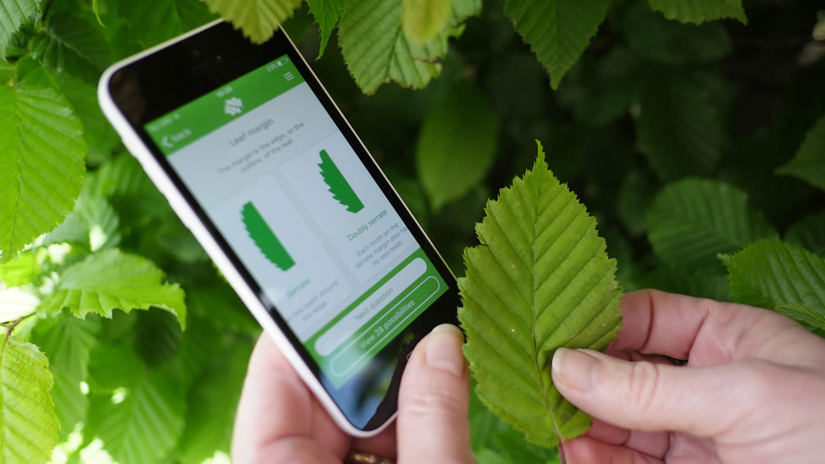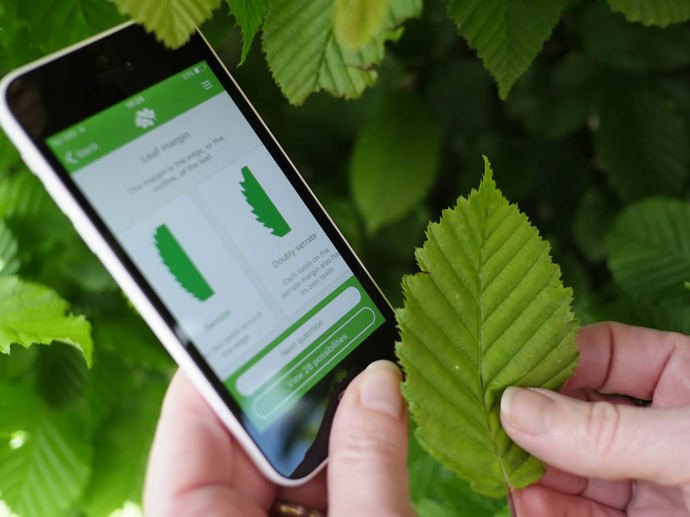Common name: apple
Scientific name: Malus x domestica
Family: Rosaceae
Origin: non-native
Tart, tangy and crisp. The fruit of the apple tree is a firm favourite in the UK. And although they’re not native, we’ve been breeding them for centuries as eaters, cookers and to make cider.
Common name: apple
Scientific name: Malus x domestica
Family: Rosaceae
Origin: non-native
The apple tree is small to medium in size, measuring up to 10m high.
Look out for: its leaves, which are slightly woolly above and densely woolly below; and its large green to red fruits.
Identified in winter by: their bark which is typically grey in colour and often has bumps, scales or ridges.

Credit: Lesley Newcombe / WTML
Dark green and typically oval in shape with serrated edges. Underneath, the leaves are slightly furry or woolly.

Credit: Tim Scriviner / WTML
Five-petalled and white, with hints of pink. They grow in clusters, known as blossom, and put on a stunning display in May and June.

Credit: Nature Photographers Ltd / WTML
Large green to red fruits can be sweet or sour, depending on the species. Carpels form as the fruit develops, that hold dark brown seeds.
Crab apple (Malus sylvestris), which is native to the UK. Domestic apple has much larger fruits than crab apple but it can hybridise with crab apple, bringing about forms which show characteristics of the two.


Download our free Tree ID app for Android and iPhone to identify the UK's native and non-native trees. It's an A-Z tree guide in your pocket.
Apple often escapes and can be found naturalised in hedgerows and thickets throughout the UK. These are small trees in hedgerows, scrub, copses, at roadsides and on rough ground, usually occurring as single trees.
Domesticated apple originated in Central Asia, where its wild ancestor, Malus sieversii, is still found today. Our native crab apple, Malus sylvstris, subsequently contributed to the genetic makeup of the species as domesticated apples were traded and spread throughout Europe. Apples have been grown for thousands of years in Asia and Europe, and were taken to North America by European colonists.

Apples are part of the rose family, as are pears and plums.
Apples are an important food source for wildlife. Thrushes feast on fallen fruit and bullfinches are partial to the buds. Bushy specimens are excellent nesting spots for blackbirds.
Norse mythology portrays the apple as the fruit of eternal youth and also fertility. The apple is generally seen as a forbidden fruit throughout Greek mythology, and in Christian tradition as the symbol of temptation, knowledge and sin.

Apples are the most diverse fruit – and in the UK alone we’ve bred more than 2,500 different varieties with names ranging from the familiar Bramley’s Seedling to the rare Broad-Eyed Pippin and Peasgood’s Nonsuch. They are used for eating, cooking and cider production.
The timber tends to be used for fine carving and speciality wood objects rather than everyday items. The wood is not widely available in large sizes and can be difficult to work with due to its high density.
More than 7,000 different varieties of apples have been developed worldwide.
Edible apple varieties are often susceptible to aphids, mussel scale – a sap-sucking insect – and codling moth, whose caterpillars bore into the ripe fruits and feed off the core.